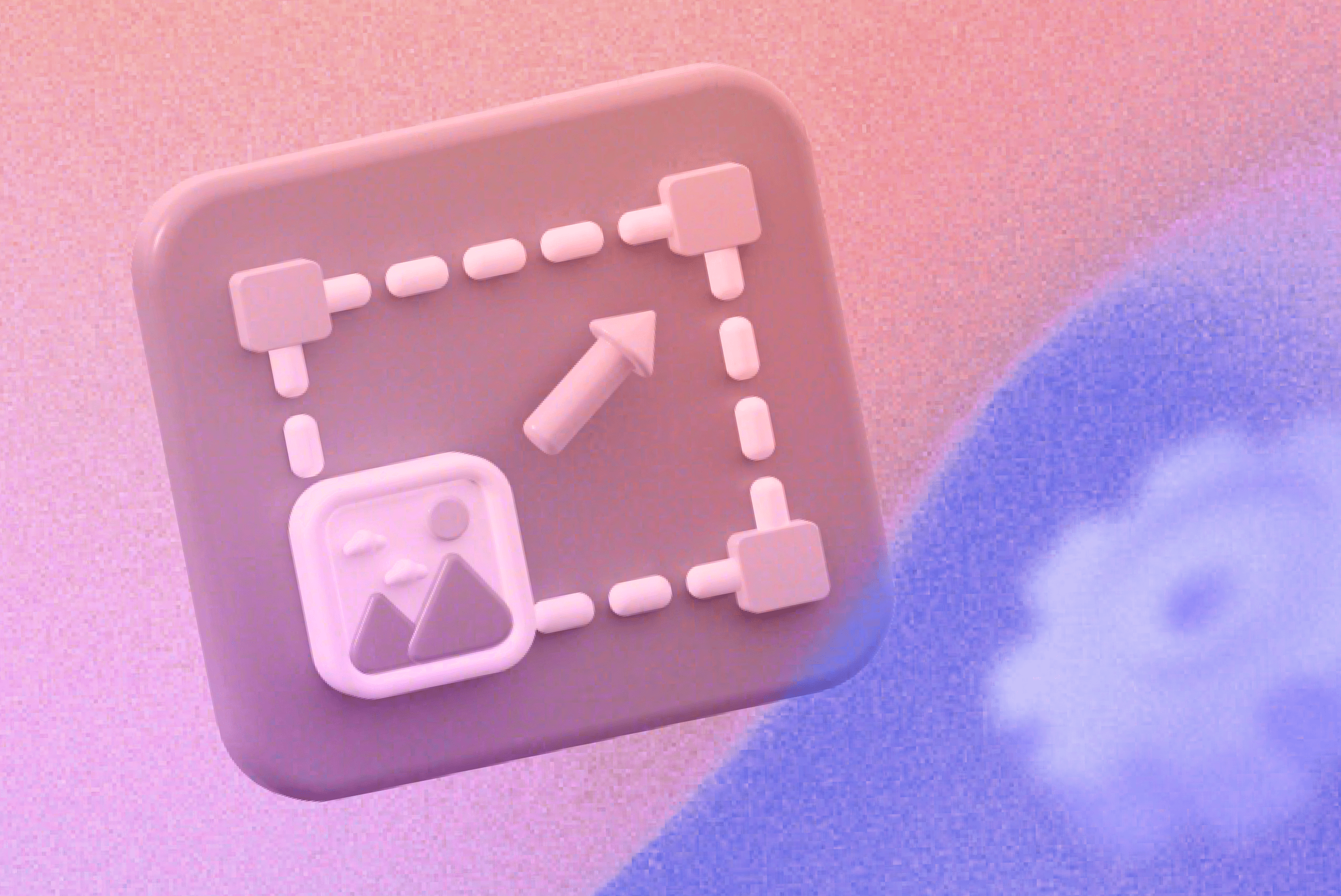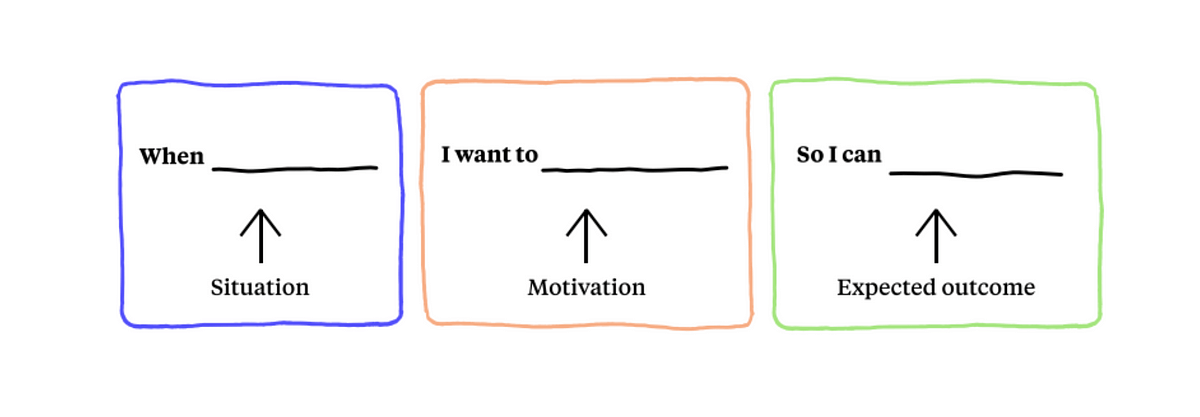Ever felt like you’re putting in a lot of effort to create content and distribute it on all possible channels, yet the results are underwhelming? Putting in place a clear content strategy framework might be the solution to your troubles. Furthermore, fine-tuning content across various platforms and strategically scheduling social media posts can significantly amplify your influence.
In this step-by-step guide, I’ll show you how to create a content strategy framework that keeps you laser-focused on your objectives but also gives you enough wiggle room.
Contents
What is a content strategy framework?
A content strategy framework is a structured document that compiles all crucial information related to the content marketing process. It directs the team’s efforts and helps systemize the planning, creation, and distribution of content to meet business objectives. The content strategy framework ensures your content is clear, meaningful, and resonates with the target audience.
Why do you need a content strategy framework?
Now that we know what a content strategy framework is, let’s answer why a content strategy framework is a valuable asset:
Keep content experience cohesive
A sound content strategy framework helps your team keep all your content marketing efforts straight. This includes the cadency of posting, consistent messaging across all your resources, and distribution channels tailored to your audience.
Streamline content creation and distribution
A content strategy framework includes specific methodologies, templates, and processes. This set of guidelines helps your team create and distribute content most efficiently.
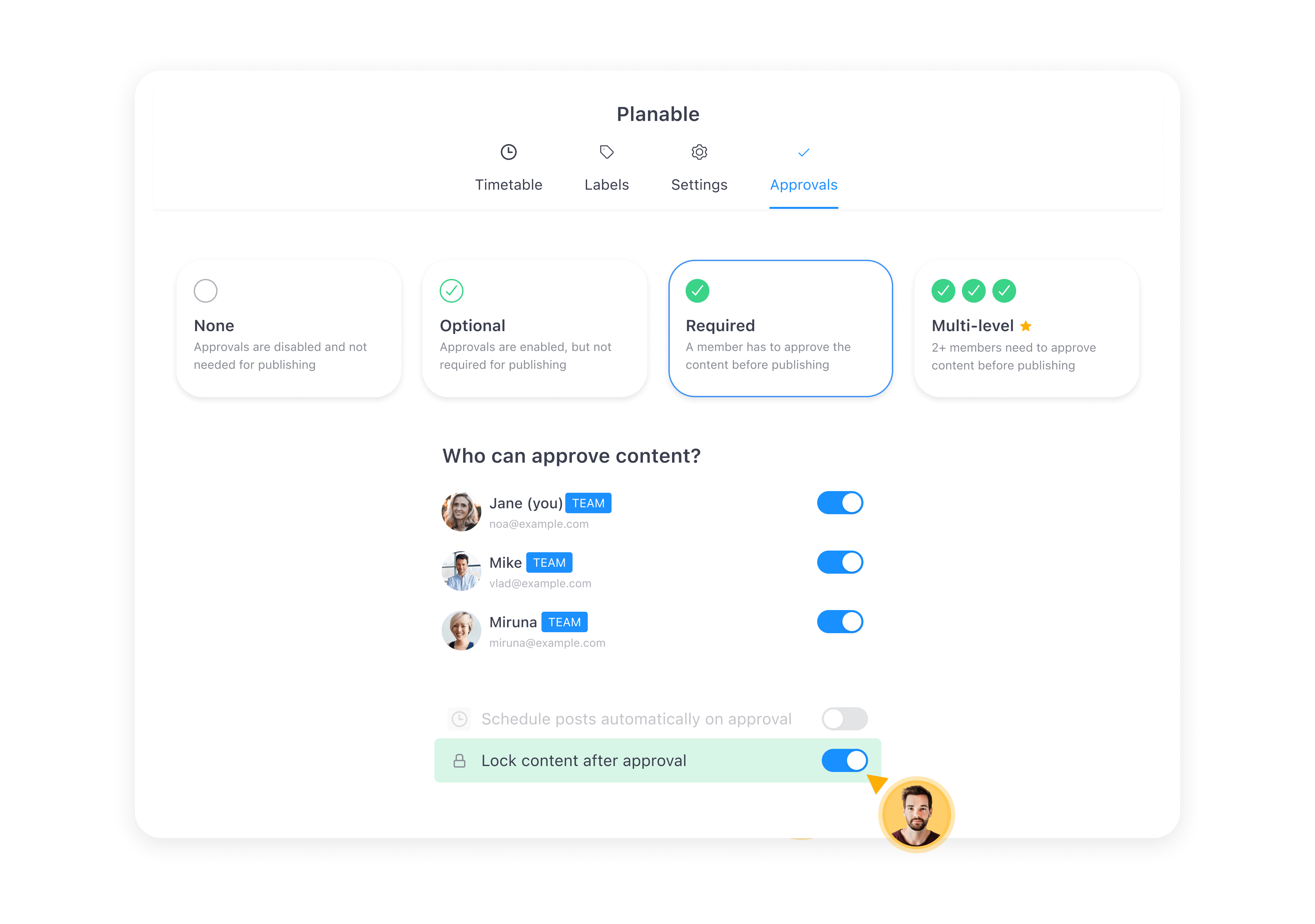
Content creation workflow settings in Planable
Improve customer journey
A content strategy framework helps you create content for different personas, addressing their pain points at every stage of the funnel. It gives you more control in leading the customer to conversion.
Achieve business goals easier
The framework enables you to align content with specific objectives, making it easier to measure success and adapt strategies. It also helps you build a relevant content marketing strategy to achieve these goals.
How to build a content strategy framework
Building a content strategy framework is a significant endeavor for a content team. That’s why I encourage you to use the step-by-step detailed guide below.
Clarify your business offer and services
A smart content strategy framework begins with a deep dive into your product or service. Your findings will later become the foundation of your content strategy.
Answer these questions:
1. What exactly do you offer?
Explain your product or service in simple words, highlighting its core value. Key features can give you a good start, but I’d recommend concentrating on benefits. Emphasize the value that your product or service brings to your customers.
2. What is your unique selling point?
Your unique selling point (USP) is the “wow” factor that sets you apart and makes you stand out. It could be a particular feature, a unique approach, or a specific benefit your customers can’t find elsewhere. Make sure to highlight it in your marketing and sales content.
3. Why should your clients choose you?
This is where you evaluate your strengths and choose what can help you win over customers.
What’s special about your business? Maybe your founder has unique expertise. Or you’re a family-owned business? Choose your special something, focus your communication, and boost your lead generation efforts.
Identify your target audience and personas
It’s hard to overestimate the importance of knowing your target audience when it comes to content marketing. Your audience defines everything, from unique selling points you should be highlighting to distribution channels.
Set your general audience
Imagine we’re a fitness equipment company. Let’s define a broad group of people interested in our product based on demographics, location, and general interest.
In our case, it’s health-conscious adults aged 18-55, located in the United States, interested in exercise and wellness.
Create buyer personas
But our audience is not all congeneric. Let’s create buying personas — more detailed profiles of our potential customers within our audience.
We now have a “Gym Enthusiast Grace” (age 25-35, passionate about weightlifting) and a “New Year’s Resolution Nick” (age 30-45, setting fitness goals in January).
Conduct market research
Grace and Nick represent two different audience segments — thus, have different pain points. We’ll need more insights into their habits and goals to guide both of them through the buyer’s journey. So we send out a survey and run some in-depth customer interviews.
We now learn Grace is highly engaged on Instagram and prefers video content, while Nick relies on Google for fitness tips articles.
Tip: A Jobs-to-be-Done (JTBD) framework revolves around the core “jobs” your audience seeks to accomplish by “hiring” your brand.
We can weave in Nick’s and Grace’s “jobs” into our content plan: if Grace is trying to build muscle and Nick aims to kickstart a fitness routine, include nutrition tips on a protein-rich diet and easy home workouts to address their goals.
Set SMART content marketing goals
Setting the right goals is crucial – not only are they indicators of your success, but they also give your efforts direction.
I’m a fan of the SMART framework for setting goals. It’s easy, and includes everything you need to set goals you’ll be able to achieve.
Say you want to generate leads. Let’s turn it into a SMART goal:
- Specific: Generate 500 new leads in the next quarter.
- Measurable: Track lead acquisition through website sign-ups, white-paper downloads, and contact forms.
- Achievable: Your marketing tactics would be increasing website traffic through targeted digital campaigns, optimized landing pages, and strategic email marketing. You have enough resources to generate the 500 targeted leads.
- Relevant: Increasing lead generation supports the company’s objective to grow its customer base and boost sales.
- Time-bound: Achieve the goal of 500 new leads within the next three months, which is a very clear deadline.
Tip: When using content as a tool, don’t try to cover all of your business goals at once. Most goals are connected to raising brand awareness, boosting sales, or increasing retention. Each of these big directions represents different stages of the funnel and demands different content.
Decide on the content types and formats
A sound content strategy is always based on providing valuable content relevant to your audience in the most convenient form. Content marketers have many options to choose from: blog posts, podcasts, social media content, short videos, long videos, email, etc.
Based on your audience’s preferences, select the types and formats of content that resonate with them.
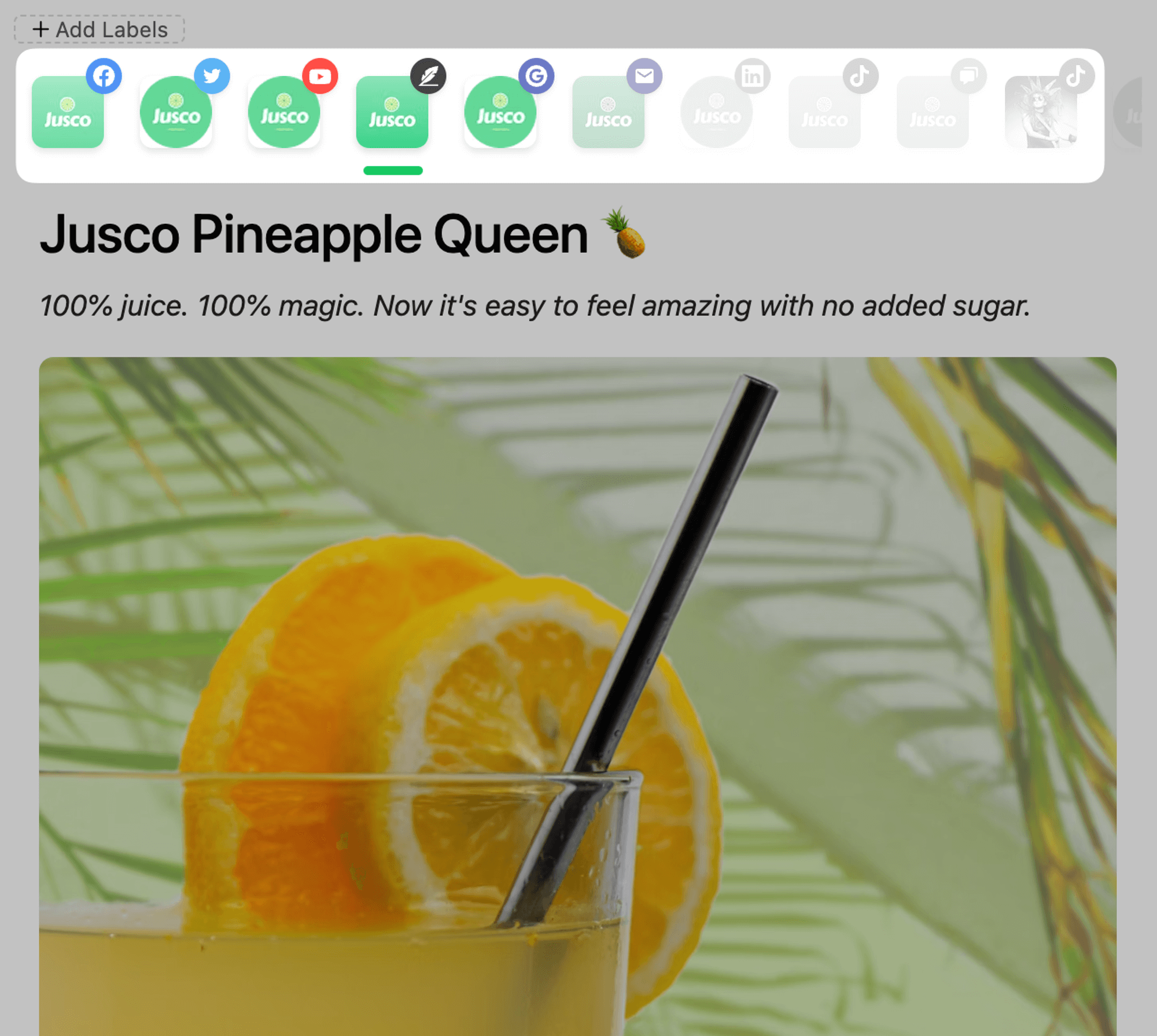
Creating content for multiple channels simultaneously in Planable
Circling back to our fitness equipment example — Grace prefers videos, while Nick likes articles. That makes at least two types of content we need to add to our content production pipeline.
Run a content audit
Skip this step if you have no content yet. If you’re creating content already, take a moment to audit it.
A content audit is a systematic review of all your content assets. It allows you to identify your current weak spots and refine your strategy to work its best.
Here’s a tried and tested workflow I’ve followed with many of my clients that you can use when you run your content audit:
- Take a look at the current content strategy. That includes the cadency of posting, core channels, most used formats, and content pillars.
- Evaluate existing content performance. Take a closer look at metrics like engagement, views, clicks, reach, and latest conversion rates to understand where you stand now.
- Identify weak spots. Compare the metrics to see what’s been falling behind: look for low-engagement formats, any dips in organic traffic, or a lack of visual content. Keep an eye out for content gaps and outdated pieces you can rework and turn into relevant content.
- Identify strengths. Figure out what type of content your audience prefers. Your best-performing posts and marketing research can help with this.
- Create an action plan. Choose topics that resonate with your audience, wrap them in their preferred format, sprinkle them with your brand message, and serve them through the channels of your audience’s choice.
Map out your internal workflow
Content strategy frameworks help you define and maintain your processes to create quality content faster. Here’s a short to-do for creating a workflow for your content marketing team:
Define roles
Decide who’s responsible for each part of the content production. Who does SEO briefs? Who approves the final content? Who gathers data after publication?
Assigned roles with task management software help you streamline processes and avoid confusion amongst your teammates.
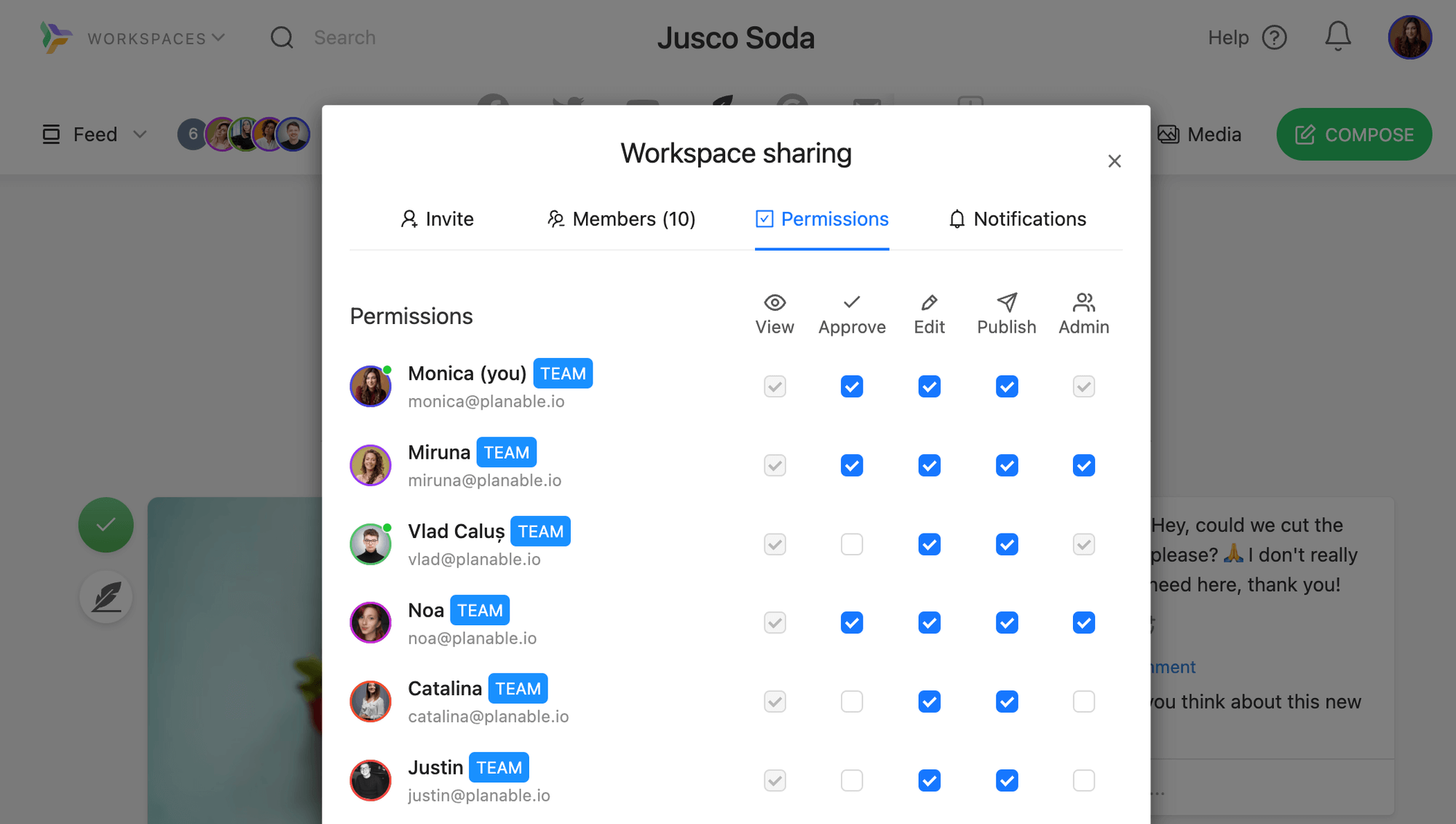
Roles & permissions settings in Planable
Create a pipeline
Creating high-quality content takes preparation. Based on your team’s experience, core content formats, and content volume, decide on the content workflow, task management system, and progress tracking options.
Tip: efficient collaboration is crucial for any content pipeline to work smoothly. Pay special attention to a swift feedback exchange to avoid bottlenecks and accidental unapproved slips.
Choose your content tools
I stand for marketing automation in every possible way. Content tools, such as Planable, greatly help to optimize your pipeline and everyday collaboration.
My must-have features are:
- Collaboration mode with in-context commenting
- Multi-layered automated approval
- Automated content publication to major channels
- Support for multiple content formats
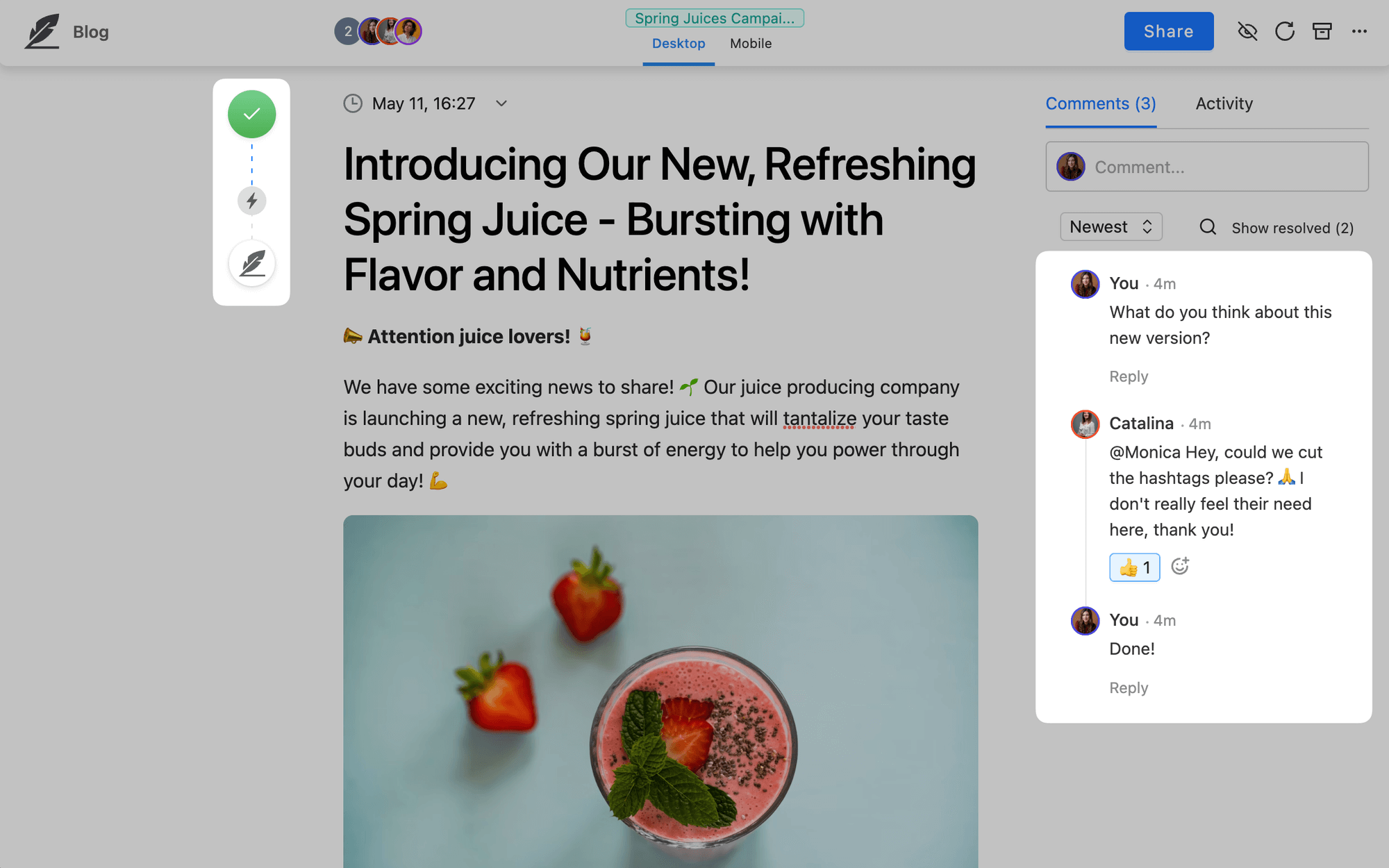
Collaboration on a blog post in Planable
For instance, Planable is a content marketing tool that allows content teams to manage content creation for any platform, be it social media, blogs, emails, landing pages, or whatnot. It feels like Google Docs on content steroids: create, exchange feedback, get approvals, press “publish”, and report success. All within one platform.
Develop an editorial content calendar
An editorial calendar is a content planning tool to schedule and organize your content. It helps your content management team stay on track and avoid gaps in the posting schedule.
But you also want your brand to sound cohesive across all channels — and that’s what the editorial style guide is for. It outlines specific guidelines for writing style, tone, formatting, and branding elements, so start there.
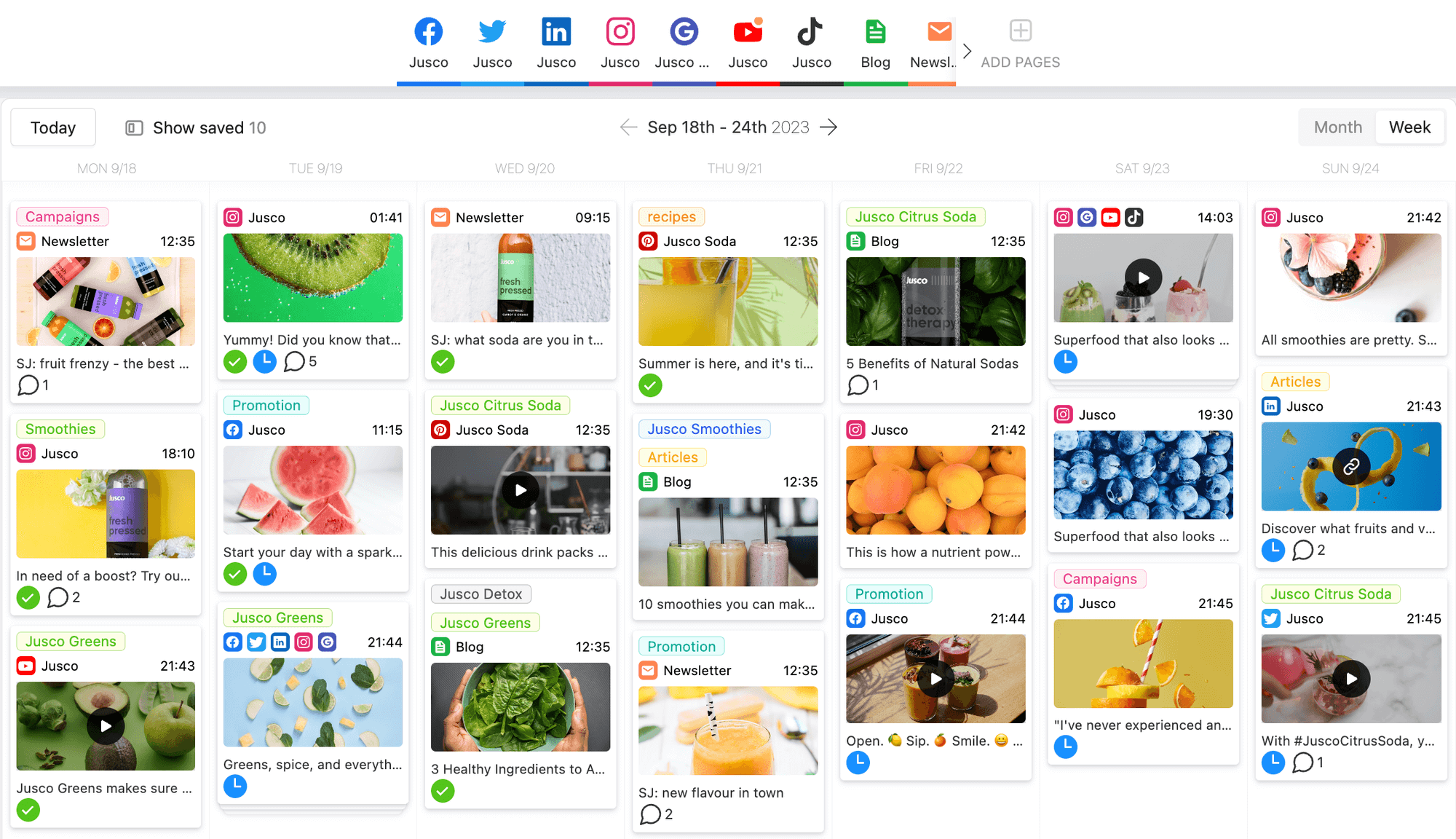
Content calendar in Planable
Moving on to the editorial calendar — here’s how to create one:
- Select your planning tool. It should be visual and easy to use and organize. (hint: Planable)
- Define content pillars. Categorize your content based on topics and brand messages to help identify content gaps and opportunities. Planable has colored labels to divide Awareness posts from Sales ones.
- Define distribution channels. List all your platforms, including social media, blogs, YouTube, etc.
- Set content cadency. Decide how often you want — and can — publish content. Consistency is key, so be realistic.
- Populate the calendar. Distribute your content ideas between publication days. Alternate your content pillars and formats to keep it fun for the subscribers.
- Keep the calendar updated. Make it your single source of truth: reflect all changes and reschedules and gather new content ideas.
Create a content distribution and promotion strategy
Various channels demand different content formats, and managing the distribution can become quite messy. Your best friend here is a content management system and distribution tool like Planable.
Several tips on tailoring your distribution and promotion strategy:
- Plan for multiple channels, but to a limit. Don’t stick to Facebook only, but also don’t jump on all social media platforms. Start with 3-4 core channels, preferably not only social.
- Follow your audience. Your core channels are those with your active audience. If you need to expand to TikTok to follow your migrating Instagram audience, do it.
- Repurpose your content. A detailed blog post can become a series of engaging social media posts and provide you with weeks worth of content.
- Use your channels for organic content promotion. Treat it as your media ecosystem: promote your blog post on email and social media; feature your social media on your website; add a website webinar registration link to a newsletter.
- Befriend Google Analytics. If you’re investing in SEO, Google Analytics is a must-have to track your SEO efforts and ensure your content performs at its best. It also works for paid campaigns outside your social media strategy.
Planable is one of the tools that help you create content and distribute it in the blink of an eye. If you rely on social media, Planable has got you covered with super visual scheduling and automated publishing to all major social media platforms.
Explore some StoryChief alternatives that can strengthen your content strategy framework and improve your publishing process.
FAQs about creating a content marketing framework
What is the core of content strategy?
The core of your content strategy is relevant content that aligns with your business goals and provides value to your audience.
What is the content strategy framework also known as?
“Content strategy model” or simply a “content framework.” These terms are often used interchangeably, as they all refer to the structured approach and guidelines that shape your content strategy.
What is the difference between a content plan and a content strategy?
Content strategies refer to an overarching and global content approach your business takes. Content plans are more tactical — they outline the steps you need to take to implement your strategy.
Build a framework for your content strategy
The key components of a successful content strategy framework are knowing your audience and understanding the goals you want to achieve through your content.
Once you know your audience’s habits and needs, you can choose the most efficient format and channels to pass your valuable information directly to your customers.
The framework is not set in stone. Remember to refine it regularly: use analytics tools to monitor important metrics and tweak your content strategy according to your current needs.
Managing content is no easy task, but a content strategy framework can help your team stay laser-focused on your objectives. And Planable is here to help you implement a sustainable content framework. Try Planable now — 50 free posts await you!



